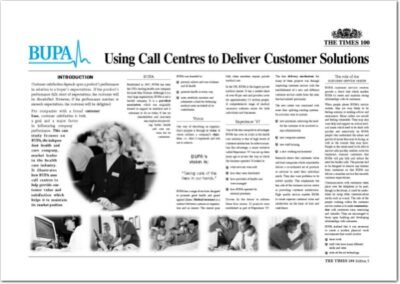In the digital age, the creation of high-quality content is only half the battle; the other half lies in effectively distributing that content to reach the intended audience. A content distribution strategy is a systematic approach that outlines how content will be shared across various platforms to maximise visibility and engagement. This strategy is essential for businesses and individuals alike, as it ensures that valuable content does not languish in obscurity but instead reaches the right people at the right time.
The landscape of content distribution has evolved significantly with the advent of social media, email marketing, and various online platforms. As a result, a well-crafted content distribution strategy is no longer a luxury but a necessity for anyone looking to establish a strong online presence. By understanding the nuances of content distribution, organisations can enhance their brand visibility, foster audience engagement, and ultimately drive conversions.
Summary
- Content distribution strategy is essential for reaching and engaging your target audience.
- Effective content distribution can increase brand visibility and drive traffic to your website.
- A successful content distribution strategy includes creating valuable content, identifying target audience, and selecting the right distribution channels.
- Content distribution channels can include social media, email marketing, influencer partnerships, and content syndication.
- A content distribution plan should outline goals, target audience, content types, distribution channels, and metrics for success.
Understanding the Importance of Content Distribution
Content distribution is crucial for several reasons, primarily because it amplifies the reach of content. Even the most insightful articles or engaging videos can go unnoticed if they are not effectively distributed. By utilising a strategic approach to distribution, businesses can ensure that their content reaches a broader audience, thereby increasing brand awareness and establishing authority within their industry.
Moreover, effective content distribution can significantly enhance audience engagement. When content is shared across multiple channels, it creates opportunities for interaction and feedback from the audience. This engagement not only fosters a sense of community but also provides valuable insights into audience preferences and behaviours.
Understanding these dynamics allows businesses to tailor their future content to better meet the needs of their audience, creating a virtuous cycle of content creation and distribution.
Key Components of a Successful Content Distribution Strategy

A successful content distribution strategy comprises several key components that work in tandem to achieve desired outcomes. Firstly, identifying target audiences is paramount. Understanding who the content is intended for allows businesses to tailor their messaging and choose the most effective channels for distribution.
This involves creating detailed buyer personas that encapsulate demographic information, interests, and online behaviours. Secondly, selecting the right distribution channels is critical. Different types of content resonate with different audiences on various platforms.
For instance, visual content may perform exceptionally well on Instagram or Pinterest, while in-depth articles may find a more receptive audience on LinkedIn or industry-specific forums. A successful strategy will involve a mix of owned, earned, and paid media to maximise reach and engagement. Another essential component is timing.
The timing of content distribution can significantly impact its performance. Research indicates that certain days and times yield higher engagement rates on specific platforms. For example, B2B content often performs better during weekdays, while B2C content may see more interaction during weekends.
Therefore, understanding when your audience is most active can lead to more effective distribution.
Types of Content Distribution Channels
Content distribution channels can be broadly categorised into three main types: owned, earned, and paid media. Owned media refers to channels that a business controls directly, such as its website, blog, and social media profiles. This type of distribution allows for complete control over messaging and branding but may have limitations in terms of reach unless complemented by other strategies.
Earned media encompasses organic exposure gained through public relations efforts, social shares, and word-of-mouth marketing. This type of distribution is often seen as more credible by audiences since it comes from third-party endorsements rather than direct promotion by the brand itself. However, earned media can be unpredictable and requires consistent effort in building relationships with influencers and engaging with audiences.
Paid media involves investing in advertising to promote content across various platforms. This can include pay-per-click (PPC) campaigns, sponsored posts on social media, or display ads on websites. While this approach can yield immediate results and broader reach, it requires careful planning and budgeting to ensure a positive return on investment.
How to Create a Content Distribution Plan
Creating an effective content distribution plan begins with setting clear objectives. These objectives should align with broader business goals and could range from increasing website traffic to generating leads or enhancing brand awareness. Once objectives are established, the next step involves identifying target audiences and understanding their preferences regarding content consumption.
Following this, businesses should select appropriate distribution channels based on where their target audience is most active. This selection process should consider both the type of content being distributed and the unique characteristics of each channel. For instance, if the goal is to share in-depth research findings, LinkedIn may be more suitable than Instagram.
After selecting channels, it is essential to develop a content calendar that outlines when and how often content will be distributed across each platform. This calendar should include key dates relevant to the industry or audience, ensuring that content is timely and relevant. Additionally, incorporating a mix of formats—such as articles, infographics, videos, and podcasts—can cater to diverse audience preferences.
Measuring the Success of Your Content Distribution Strategy

To determine the effectiveness of a content distribution strategy, businesses must establish key performance indicators (KPIs) that align with their objectives. Common KPIs include website traffic metrics, social media engagement rates (likes, shares, comments), conversion rates, and lead generation figures. By tracking these metrics over time, organisations can gain insights into what works and what doesn’t.
Utilising analytics tools is crucial for measuring success accurately. Platforms like Google Analytics provide detailed reports on user behaviour, allowing businesses to assess which pieces of content are driving traffic and engagement. Social media analytics tools can also offer insights into audience demographics and engagement patterns across different posts.
Regularly reviewing these metrics enables businesses to refine their strategies continually. For instance, if certain types of content consistently outperform others in terms of engagement or conversions, organisations can focus more on producing similar content in the future. Conversely, if specific channels are underperforming, it may be necessary to reassess their relevance or adjust the approach taken on those platforms.
Common Mistakes to Avoid in Content Distribution
Despite the best intentions, many businesses fall prey to common pitfalls in their content distribution efforts. One prevalent mistake is neglecting to define clear objectives before launching a distribution strategy. Without specific goals in place, it becomes challenging to measure success or determine whether efforts are yielding desired results.
Another frequent error is failing to understand the target audience adequately. Distributing content without a clear understanding of who it is meant for can lead to misalignment between messaging and audience needs. This disconnect often results in low engagement rates and wasted resources.
Additionally, over-reliance on a single channel can be detrimental. While it may be tempting to focus solely on one platform where initial success has been observed, diversifying distribution channels is essential for reaching broader audiences and mitigating risks associated with platform changes or algorithm updates.
Examples of Successful Content Distribution Strategies
Several brands have successfully implemented robust content distribution strategies that serve as exemplary models for others looking to enhance their own efforts. One notable example is HubSpot, which has built an extensive library of educational resources ranging from blogs to eBooks and webinars. Their strategy involves distributing this content across multiple channels—social media platforms, email newsletters, and partnerships with industry influencers—ensuring maximum reach and engagement.
Another compelling case is that of Buffer, a social media management tool that leverages its blog as a primary distribution channel for valuable insights on social media marketing. Buffer employs a mix of owned media through its blog and earned media by encouraging shares from readers and collaborating with influencers in the marketing space. Their consistent focus on providing actionable advice has helped them build a loyal following while driving significant traffic back to their website.
These examples illustrate how a well-executed content distribution strategy can lead to increased brand visibility and audience engagement while establishing authority within an industry. By learning from such successful cases, other organisations can refine their own strategies to achieve similar outcomes in their respective fields.
When developing a content distribution strategy, it is important to consider various factors that can impact the reach and effectiveness of your content. One key aspect to consider is the use of social media platforms to distribute your content to a wider audience. According to a recent article on businesscasestudies.co.uk, building a WordPress website can provide a solid foundation for distributing your content online. By utilising the features and plugins available on WordPress, you can easily share your content across different social media platforms and reach a larger audience. This can help to increase the visibility of your content and drive more traffic to your website.
FAQs
What is a content distribution strategy?
A content distribution strategy is a plan that outlines how and where a company will distribute its content to reach its target audience. It involves determining the best channels and platforms to use for sharing content, such as social media, email, and third-party websites.
Why is a content distribution strategy important?
A content distribution strategy is important because it helps companies ensure that their content reaches the right audience at the right time. It also helps to maximize the impact of their content by increasing visibility and engagement.
What are the key components of a content distribution strategy?
Key components of a content distribution strategy include identifying the target audience, selecting the most appropriate distribution channels, creating a content calendar, and measuring the effectiveness of the distribution efforts.
What are some common distribution channels for content?
Common distribution channels for content include social media platforms (such as Facebook, Twitter, and LinkedIn), email marketing, content syndication platforms, influencer partnerships, and search engine optimization (SEO) strategies.
How can companies measure the effectiveness of their content distribution strategy?
Companies can measure the effectiveness of their content distribution strategy by tracking key performance indicators (KPIs) such as website traffic, social media engagement, email open rates, and conversion rates. They can also use analytics tools to gain insights into audience behaviour and content performance.
 Using global segmentation to grow a business (PDF)
Using global segmentation to grow a business (PDF)  Adding value through health and safety (MP3)
Adding value through health and safety (MP3)  Using call centres to deliver customer solutions (PDF)
Using call centres to deliver customer solutions (PDF) 